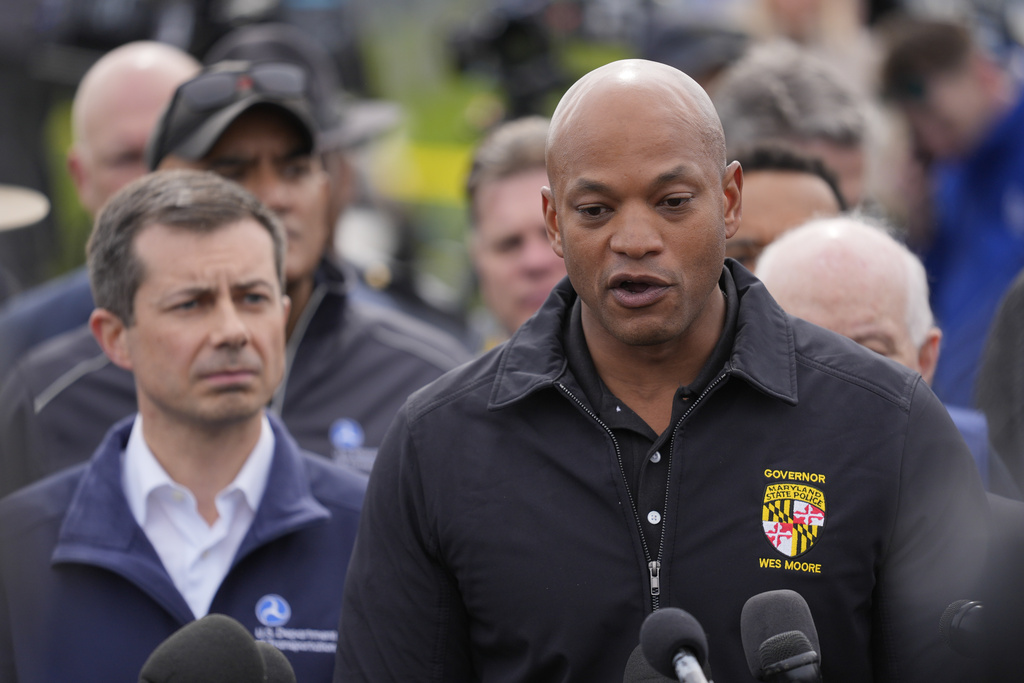

With Gov. Wes Moore (D-MD) cutting $3.3 billion worth in infrastructure projects last year due to inflation, and now dealing with a state assembly that is struggling to pass a balanced budget, covering the costs of rebuilding the Francis Scott Key Bridge and reestablishing shipping at the port is just another problem for him.
While President Joe Biden said that the federal government would pay for the rebuilding of the bridge, the measure must first be approved by Congress, leaving everything up in the air.
“There’s so much uncertainty ahead of us,” state Senate Budget and Taxation Committee Chairman Guy Guzzone told the Washington Post. “We need to be carefully looking at all these things before we go to the residents of Maryland.”
Moore issued an executive order giving lawmakers an extra 10 days to resolve whether or not to pass $1.2 billion in tax and toll increases. Right now, a deficit exists in the state budget that hasn’t been seen since the Great Recession.
“We have just seen an unprecedented tragedy in our state,” the governor said in a statement. “Tonight’s procedural step allows the General Assembly to continue working towards a final budget that makes Maryland safer, more economically competitive, more affordable and the state that serves while we navigate the impacts of the collapse of the Francis Scott Key Bridge.”
The collapse of the bridge will be a blow to the state’s economy. The port supports 15,000 jobs and another 140,000 indirectly. A report revealed that $80 billion worth of foreign cargo passed through the now-blocked port in 2023.
Meanwhile, negotiation talks have left the state’s House and Senate a billion dollars apart in setting a budget.
It’s common to extend the session just in case, even though it’s rarely needed, state House Appropriations Committee Chairman Ben Barnes told the news outlet. “This year, it should be taken a little more seriously given that we haven’t come together yet,” he said.
A Democratic supermajority exists in both the state House and Senate, but the two chambers have been at odds about whether to raise taxes this year or next.
Moore said he has “a very high bar” for supporting a tax increase on residents recovering from record-high inflation.
The Senate has supported a bill that raises $250 million annually for transportation needs, while the House is focused on raising money for education.
The budget deficit can partly be stemmed from an education program known as the Blueprint for Maryland’s Future. When fully implemented, it would provide preschool, increase teacher pay, and earmark hundreds of millions to schools in the poorest neighborhoods.
However, the program was passed without a permanent funding stream, and in the next four years, the program will be responsible for $4 billion in budget deficits.
House Democrats have pushed two amendments, one that legalizes a tax on online poker and another that changes how corporate taxes are calculated. Both of these measures would bring in $525 million each year to cover the school program.
Meanwhile, there is no plan that exists to pay for the American Legion Bridge over the Potomac River or build the Red Line transit project in Baltimore.
CLICK HERE TO READ MORE FROM THE WASHINGTON EXAMINER
On the other hand, Senate Democrats are calling to impose fees on electric vehicles, and House Democrats are expected to go further with the measures.
Originally set to adjourn on Monday, the Maryland General Assembly will have another 10 days to pass a budget.







